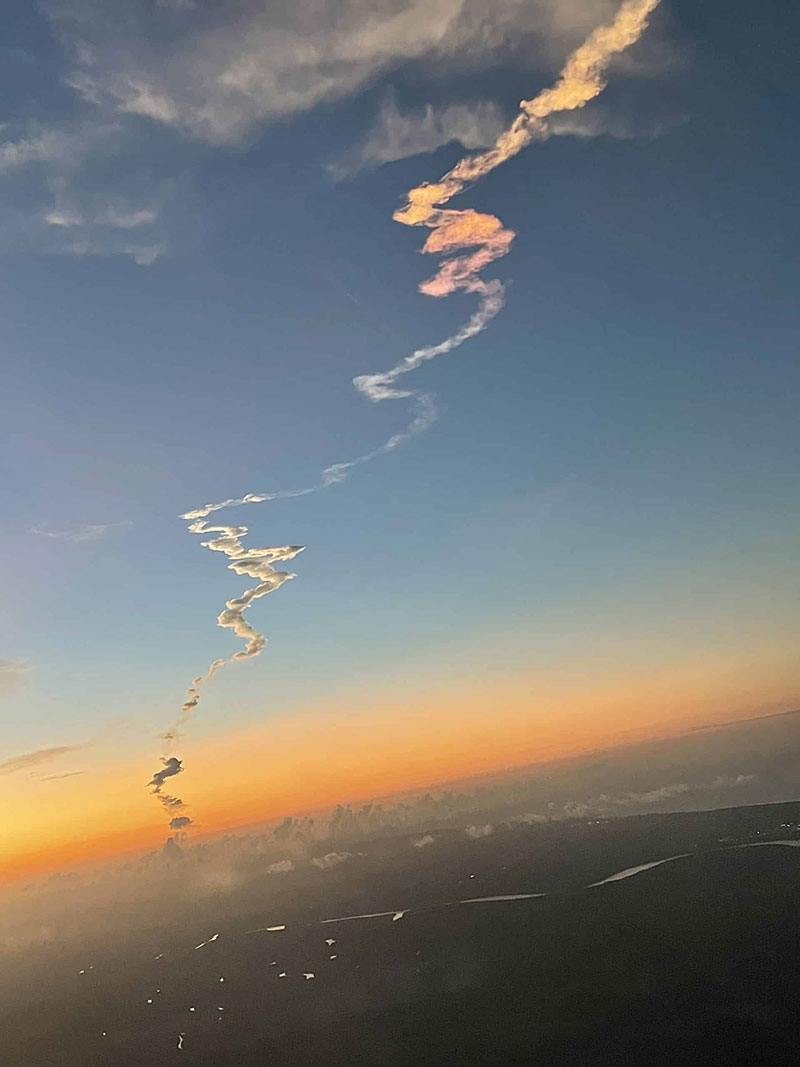 This image of trail of Ariane 5 during the Sept. 7 launch of the Eutelsat Konnect VHTS satellite was taken from aboard Air France flight that took off from French Guiana's Cayenne airport about the same time as the Ariane 5 lifted off.
This image of trail of Ariane 5 during the Sept. 7 launch of the Eutelsat Konnect VHTS satellite was taken from aboard Air France flight that took off from French Guiana's Cayenne airport about the same time as the Ariane 5 lifted off.
PARIS — The European Space Agency (ESA) scrapped a planned late-September update on when the Ariane 6 rocket will fly and whether the agency will be obliged to go to SpaceX to launch at least one European government mission as a result of continued Ariane 6 delays.
The lack of clarity has only increased the of European government and industry officials who now fear that the heavy-lift Ariane 6 will not fly until late 2023 or even early 2024.
The Ariane 6 program on Oct. 5 announced a piece of good news with the test firing of the Ariane 6 upper stage at the German Aerospace Center (DLR) Lampoldshausen test site.
The test was months late, with the latest delay attributed to an early-September rainstorm that weather forecasts did not predict. A portion of the test facility, which had been configured for a dry run of the firing the day of the storm, was flooded.
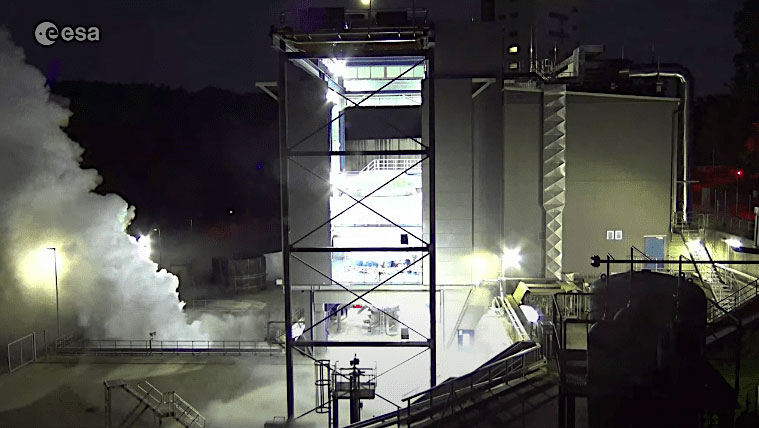 The Ariane 6 upper stage was first test-fired Oct. 5 at the German Aerospace Agency (DLR) site in Lampoldshausen. Credit: ESA
The Ariane 6 upper stage was first test-fired Oct. 5 at the German Aerospace Agency (DLR) site in Lampoldshausen. Credit: ESA
The upper stage contains most of Ariane 6’s performance improvements over the Ariane 5 — the features that allowed the Arianespace launch consortium to win its biggest-ever contract, an 18-launch order from Amazon’s Kuiper Systems.
At Europe’s Guiana Space Center on the northeast coast Of South America, a mockup of the Ariane 6 is at its new launch pad to perform a months-long series of combined tests of the rocket’s behavior in launch configuration.
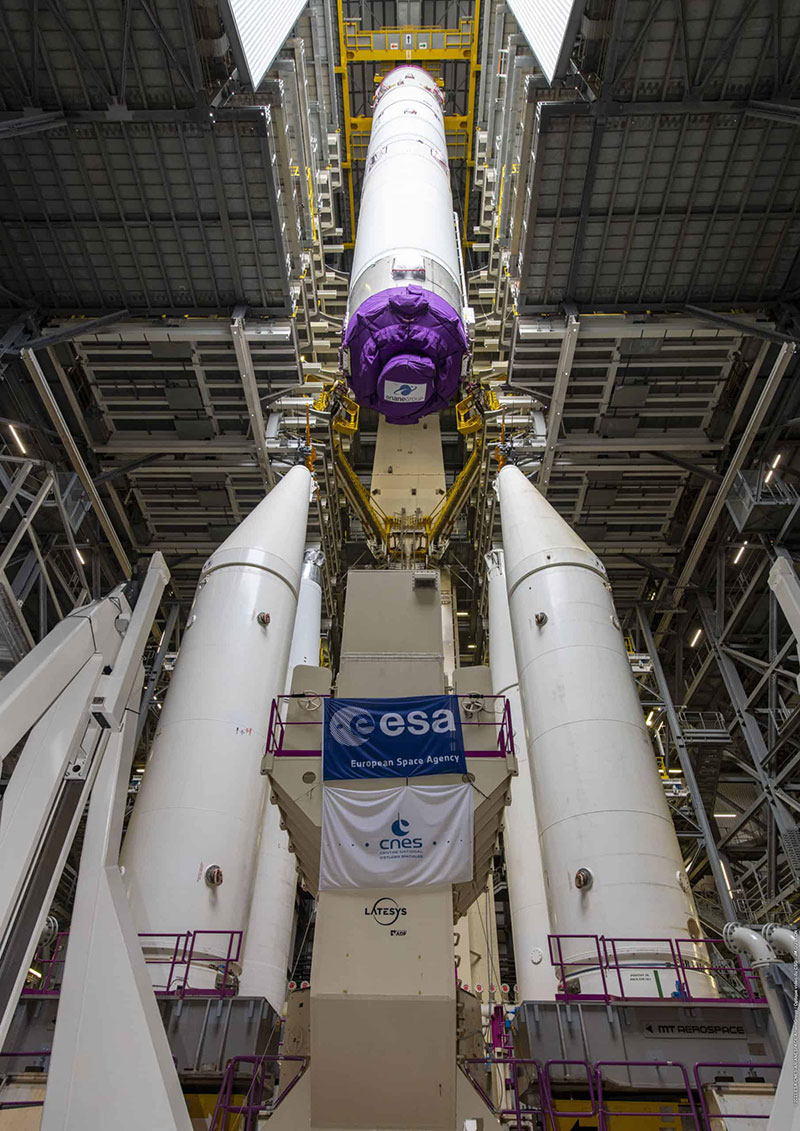 Ariane 6’s main stage arrives at the Guiana Space Center. Credit: ESA/CNES/Arianespace
Ariane 6’s main stage arrives at the Guiana Space Center. Credit: ESA/CNES/Arianespace
Mechanical tests have started, but the electrical and test-firing campaigns are yet to come.
The 22-nation ESA has scheduled a reunion of its government ministers for Nov. 22-23 in Paris. It’s a meeting that occurs every three years to set budget and program direction.
Daniel Neuenschwander, the agency’s director of space transportation, has assembled a package of proposals totaling about 3 billion euros ($3 billion) over three years. “A good half of that” will be devoted to Ariane 6, the new medium-lift rocket Vega-C and the development of a LOx-methane propulsion system for a future Vega-E, Neuenschwander said.
The already substantial costs of the Ariane 6 delays also must be paid. The longer the delay, the more likely it is that Neuenschwander will need to divert planned spending on other areas toward Ariane 6.
European government and industry officials said that it remains unclear who — ESA; the French space agency, CNES, responsible for development of the Ariane 6 launch pad; or the industrial consortium led by ArianeGroup — will pay the costs of the delays.
Continued uncertainty about Ariane 6 is increasing pressure on the five European government missions that had been scheduled for launch on Russian Soyuz rockets in 2022 and early 2023 and now must look elsewhere given Russia’s invasion of Ukraine.
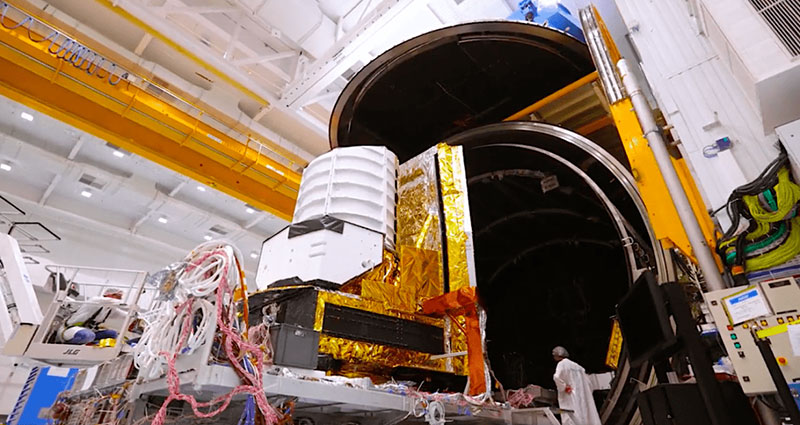 The Euclid science satellite enters the thermal-vacuum chamber of its prime contractor, Thales Alenia Space. Credit: Thales Alenia Space
The Euclid science satellite enters the thermal-vacuum chamber of its prime contractor, Thales Alenia Space. Credit: Thales Alenia Space
The missions are ESA’s Euclid science satellite; the EarthCare Earth observation satellite from ESA and Japan’s Jaxa space agency; four European Commission Galileo positioning satellites, which had been slated for two Soyuz launches; and the French Defense Ministry’s CSO-3 high-resolution optical surveillance satellite.
Each of the sponsoring organizations has made substantial down payments as part of their Soyuz contracts. And like the commercial OneWeb broadband constellation, which had six Soyuz liftoffs still under contract, the government agencies have little hope of seeing any of that money reimbursed by its Russian counter parties.
EarthCare can be launched by a Vega C vehicle, whose mid-July inaugural flight was so smooth that launch-service provider Arianespace has scheduled the vehicle’s second flight for Nov. 21. It will launch Airbus Defence and Space’s Pleiades high-resolution optical spacecraft.
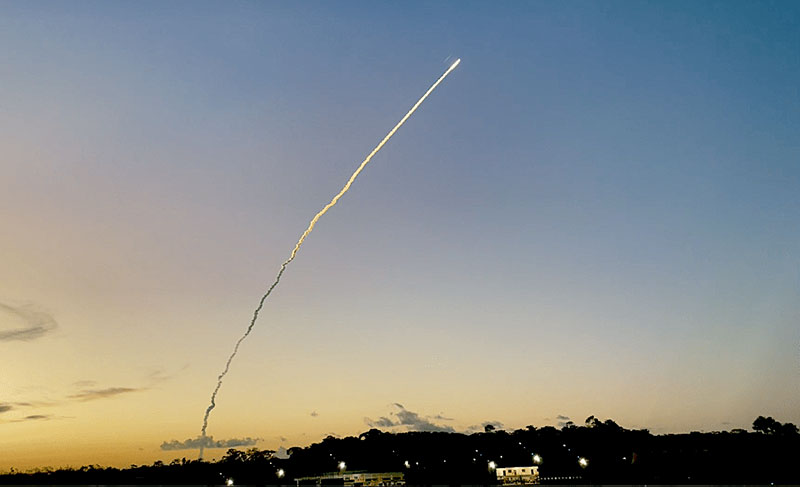 Ariane 5’s Sept. 7 launch of Eutelsat’s VHTS broadband satellite, seen from an Air France flight taking off at the same time. Three more Ariane 5 missions are scheduled before the vehicle is retired in early 2023.
Ariane 5’s Sept. 7 launch of Eutelsat’s VHTS broadband satellite, seen from an Air France flight taking off at the same time. Three more Ariane 5 missions are scheduled before the vehicle is retired in early 2023.
But the other four have no easy alternative: It’s either wait for Ariane 6, no matter how long it takes, or ask SpaceX for a Falcon 9 date. Officials said the SpaceX alternative is so politically unpalatable that the European Commission and the French Defense Ministry are all but certain to wait for Ariane 6.
For ESA’s science directorate, which has given up hope of a budget increase at the November ministerial, the situation is less charged but just as urgent.
The Euclid satellite is about ready for its planned 2023 launch but it has a lower priority than the French military and the European Commission Galileo satellites.
With several months planned between the first and second Ariane 6 flight — the interval’s length depends on how free of anomalies the inaugural flight is — that would put Euclid into late 2024 or even 2025.
Given SpaceX’s recent launch cadence, ESA likely could secure a Falcon 9 flight before that.
ESA’s Hera mission, to validate results from NASA’s Dart satellite’s successful ramming of an asteroid to assess whether its direction could be modified, is currently scheduled for October 2024 aboard an Ariane 64 rocket, the heavy variant of the Ariane 6. Its backup is a Falcon 9.
ESA Director-General Josef Aschbacher has said that despite the agency’s strong preference to launch only on European rockets — Ariane 6 and Vega C for now — ESA will not stand in the way of a non-European launch if there are mission-critical reasons.
Arianespace Chief Executive Stephane Israel said Arianespace will not oppose a program’s decision to go outside Europe — code word: to SpaceX — if necessary given the current unusual circumstances.
“Our customers, at the end of September or early October, will look at the situation with respect to Ariane 6’s availability and then make decisions,” Israel said in a Sept 7 briefing at the Guiana Space Center. “We will respect the choices of our customers.”
Read more from Space Intel Report.
